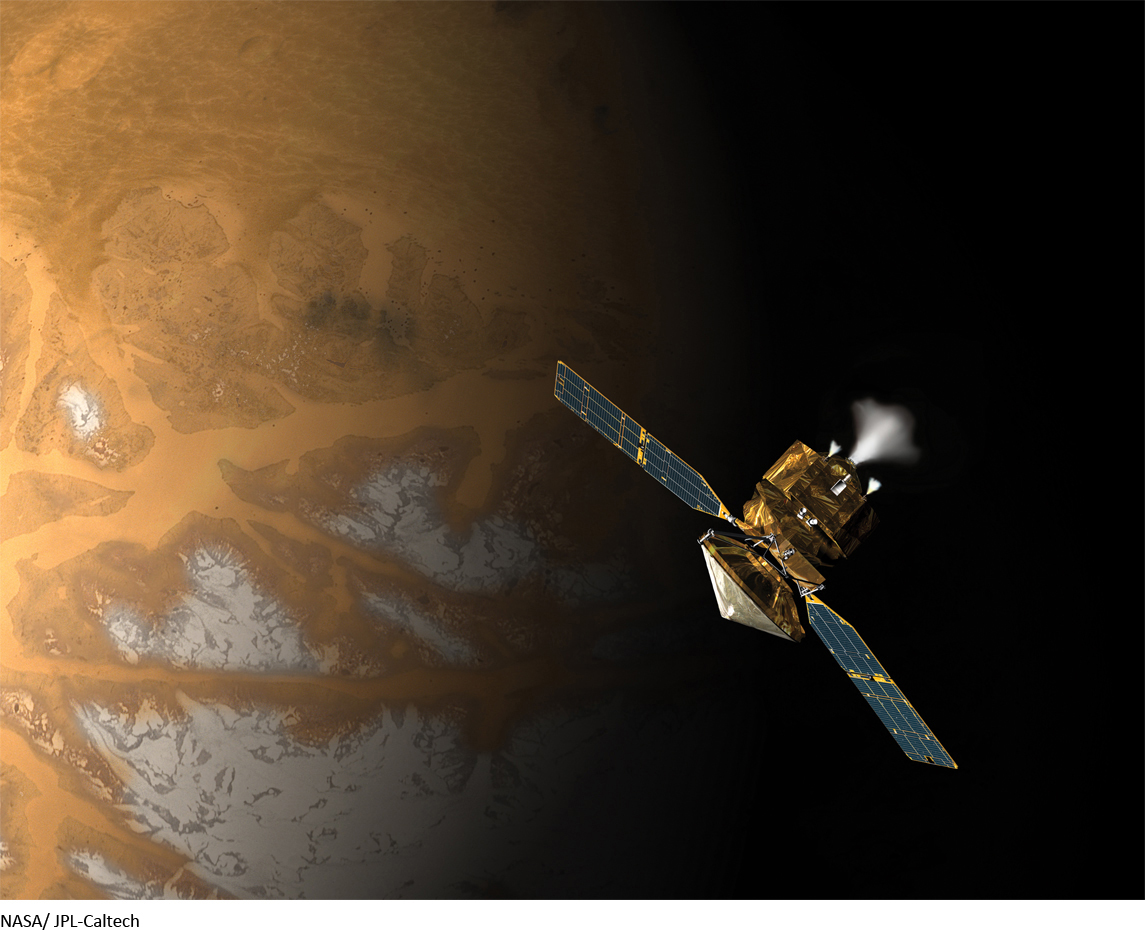87

Exploring Our Evolving Solar System
CHAPTER LEARNING OBJECTIVES
By reading the sections of this chapter, you will learn:
- 4-1 The solar system has two broad categories of planets orbiting our Sun: terrestrial (Earthlike) and Jovian (Jupiterlike)
- 4-2 Seven large moons are almost as big as the inner, terrestrial planets
- 4-3 Spectroscopy reveals the chemical composition of the planets
- 4-4 Small chunks of rock and ice also orbit the Sun: asteroids, trans-Neptunian objects, and comets
- 4-5 The Sun and planets formed from a rotating solar nebula
- 4-6 The planets formed by countless collisions of dust, rocks, and gas in the region surrounding our young Sun
- 4-7 Understanding how our planets formed around the Sun suggests planets around other stars are common
88
Fifty years ago, astronomers knew precious little about the worlds that orbit our Sun. Even the best telescopes provided images of the planets that were frustratingly hazy and indistinct. Of smaller objects—asteroids, comets, and the moons orbiting planets—we knew even less.
Today, our knowledge of what makes up the solar system has grown exponentially, due almost entirely to robotic spacecraft. Spacecraft have been sent to fly past all the planets and many of their moons at close range, revealing details unimagined by astronomers of an earlier generation. We have landed spacecraft on the Moon, Venus, and Mars and dropped probes into the atmospheres of Jupiter and Saturn’s moon Titan. This is truly the golden age of solar system exploration.
We have two goals in this chapter. First, we paint a broad outline of our present understanding of what makes up the solar system. Then, we will discuss how it came to be—that is, our current best theory of the origin of the solar system. We will also consider the nature of nearly invisible planets recently discovered orbiting other stars far beyond our own solar system. Recall from the Chapter 1 that a theory is not merely a set of wild speculations, but a collection of scientific ideas that must be able to be tested and verified by other scientists. Since no humans were present to witness the formation of the planets, scientists must base their theories of solar system origins on their observations of the present-day solar system. (In an analogous way, paleontologists base their understanding of the lives of dinosaurs on the evidence provided by fossils that have survived to the present day.) In so doing, they are following the spirit of the scientific method that we described at the beginning of this text.